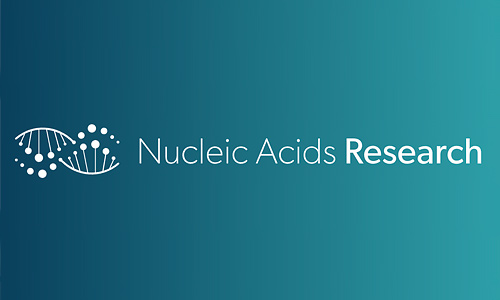- Follow Us
Publications
High-profile publications featuring CDI Labs products and services
274 Total Publications
Refine Your Search
Publication Details
- Date
- Link
- + Abstract

Frontiers in Immunology
- Main Product: HuProt
- HuProt: Anti-Phospholipid Antibodies and Coronavirus Disease 2019: Vaccination Does Not Trigger Early Autoantibody Production in Healthcare Workers
- Maria Orietta Borghi, Pier Luigi Meroni, et. al.
- IRCCS Istituto Auxologico Italiano, Immunorheumatology Research Laboratory
HuProt Autoantibodies: A molecular mimicry between severe acute respiratory syndrome coronavirus 2 (SARS-CoV-2) and human proteins supports the possibility that autoimmunity takes place during coronavirus disease 2019 (COVID-19) contributing to tissue damage. For example, anti-phospholipid antibodies (aPL) have been reported in COVID-19 as a result of such mimicry and thought to contribute to the immunothrombosis characteristic of the disease. Consistently, active immunization with the virus spike protein may elicit the production of cross-reactive autoantibodies, including aPL.

Springer - Cancer Immunology, Immunotherapy
- Main Product: HuProt
- HuProt: Identification of novel serological autoantibodies in Chinese prostate cancer patients using high-throughput protein arrays
- Ning Lou, Xiaohong Han, et. al.
- Dept of Clinical Laboratory, National Cancer Center, Chinese Academy of Medical Sciences
HuProt Autoantibodies: Autoantibody (AAb) has a prominent role in prostate cancer (PCa), with few studies profiling the AAb landscape in Chinese patients. Therefore, the AAb landscape in Chinese patients was characterized using protein arrays. First, in the discovery phase, Huprot arrays outlined autoimmune profiles against ~ 21,888 proteins from 57 samples. In the verification phase, the PCa-focused arrays detected 25 AAbs selected from the discovery phase within 178 samples. Then, PCa was detected using a backpropagation artificial neural network (BPANN) model. In the validation phase, an enzyme-linked immunosorbent assay (ELISA) was used to validate four AAb biomarkers from 196 samples.

bioRxiv
- Main Product: HuProt
- HuProt: Complex subsets but redundant clonality after B cells egress from spontaneous germinal centers
- Carlos Castrillon, Michael C. Carroll, et. al.
- Cellular and Molecular Medicine, Boston Children’s Hospital
HuProt Antibody Specificity: Affinity matured self-reactive antibodies are found in autoimmune diseases like systemic lupus erythematous. Here we used fate-mapping reporter mice and single cell transcriptomics coupled to antibody repertoire analysis to characterize the post-germinal center (GC) B cell compartment in a new mouse model of autoimmunity. Antibody secreting cells (ASCs) and memory B cells (MemBs) from spontaneous GCs grouped into multiple subclusters. ASCs matured into two terminal clusters, with distinct secretion, antibody repertoire and metabolic profiles. MemBs contained FCRL5+ and CD23+ subsets, with different in vivo localization in the spleen.

bioRxiv
- Main Product: HuProt
- Proteome-wide microarray-based screening of PAR-binding proteins
- Bong Gu Kang, Sung-Ung Kang, Jae Jin Kim, Ji-Sun Kwon, Jean-Philippe Gagné, Seo Yun Lee, Soyeon Kim, Karl L. Sangwon,...
- Neuroregeneration and Stem Cell Programs, Institute for Cell Engineering, Johns Hopkins University
Poly(ADP-ribose) (PAR) plays a crucial role in intracellular signaling and scaffolding through covalent modification or non-covalent binding to target proteins. The non- covalent binding PARylome has not been extensively characterized. Here we performed a PAR-binding screen using a human protein microarray that covers most of the human proteome to characterize the non-covalent binding PARylome. A total of 356 PAR- binding proteins were identified.

Mediators of Inflammation
- Main Product: HuProt
- HuProt: Emodin Ameliorates Intestinal Dysfunction by Maintaining Intestinal Barrier Integrity and Modulating the Microbiota in Septic Mice
- Mina Zhang, Xiaolong Xu, et. al.
- Beijing Hospital of Traditional Chinese Medicine, Capital Medical University
HuProt Small Molecule: Sepsis-induced inflammatory response leads to intestinal damage and secondary bacterial translocation, causing systemic infections and eventually death. Emodin is a natural anthraquinone derivative in many plants with promising bioactivities. However, the effects and mechanisms of emodin on sepsis-induced intestinal dysfunctions have not been well clarified yet. We found that emodin treatment suppressed the inflammatory response in the intestines of septic mice. Intestinal barrier function was also improved by emodin through enhancing ZO-1 and occludin expression, which prevented the secondary translocation of Escherichia coli.

Journal of Biological Chemistry
- Main Product: HuProt
- HuProt: Enzymatic analysis of WWP2 E3 ubiquitin ligase using protein microarrays identifies autophagy-related substrates
- Hanjie Jiang, Philip A. Cole, et. al.
- Division of Genetics, Department of Medicine, Brigham and Women’s Hospital
HuProt Enzyme: WWP2 is a HECT E3 ligase that targets protein Lys residues for ubiquitination and is comprised of an N-terminal C2 domain, four central WW domains, and a C-terminal catalytic HECT domain. The peptide segment between the middle WW domains, the 2,3-linker, is known to autoinhibit the catalytic domain, and this autoinhibition can be relieved by phosphorylation at Tyr369. Several protein substrates of WWP2 have been identified, including the tumor suppressor lipid phosphatase PTEN, but the full substrate landscape and biological functions of WWP2 remain to be elucidated.

BMC - Journal of Experimental & Clinical Cancer Research
- Main Product: HuProt
- HuProt: Hypomethylation-mediated upregulation of the WASF2 promoter region correlates with poor clinical outcomes in hepatocellular carcinoma
- Hye Ri Ahn, Soon Sun Kim, et. al.
- Dept of Gastroenterology, Ajou University School of Medicine
Hepatocellular carcinoma (HCC) is one of the most common and lethal cancers worldwide. Wiskott–Aldrich syndrome protein family member 2 (WASF2) is an integral member of the actin cytoskeleton pathway, which plays a crucial role in cell motility. In this study, we aimed to explore the role of WASF2 in HCC carcinogenesis and its regulatory mechanism.

Nucleic Acids Research - Oxford Academic
- Main Product: HuProt
- HuProt: Microarray screening reveals two non-conventional SUMO-binding modules linked to DNA repair by non-homologous end-joining
- Maria Jose Cabello-Lobato, Christine K Schmidt, et. al.
- Manchester Cancer Research Centre (MCRC), Division of Cancer Sciences, University of Manchester
HuProt DNA RNA: SUMOylation is critical for numerous cellular signalling pathways, including the maintenance of genome integrity via the repair of DNA double-strand breaks (DSBs). If misrepaired, DSBs can lead to cancer, neurodegeneration, immunodeficiency and premature ageing. Using systematic human proteome microarray screening combined with widely applicable carbene footprinting, genetic code expansion and high-resolution structural profiling, we define two non-conventional and topology-selective SUMO2-binding regions on XRCC4, a DNA repair protein important for DSB repair by non-homologous end-joining (NHEJ).

Nature Scientific Reports
- Main Product: HuProt
- Temporal reproducibility of IgG and IgM autoantibodies in serum from healthy women
- T. V. Clendenen, S. Hu, Y. Afanasyeva, M. Askenazi, K. L. Koenig, T. Hulett, M. Liu, S. Liu, F. Wu, A....
- Dept of Population Health, NYU Langone Health School of Medicine
HuProt Autoantibodies: Autoantibodies are present in healthy individuals and altered in chronic diseases. We used repeated samples collected from participants in the NYU Women’s Health Study to assess autoantibody reproducibility and repertoire stability over a one-year period using the HuProt array. We included two samples collected one year apart from each of 46 healthy women (92 samples). We also included eight blinded replicate samples to assess laboratory reproducibility. A total of 21,211 IgG and IgM autoantibodies were interrogated. Of those, 86% of IgG (n = 18,303) and 34% of IgM (n = 7,242) autoantibodies showed adequate lab reproducibility (coefficient of variation [CV] < 20%).

Nature Communications
- Main Product: HuProt
- HuProt: RNA aptamers specific for transmembrane p24 trafficking protein 6 and Clusterin for the targeted delivery of imaging reagents and RNA therapeutics to human β cells
- Dimitri Van Simaeys, Paolo Serafini, et. al.
- Dept of Microbiology and Immunology, Miller School of Medicine, University of Miami
HuProt DNA RNA: The ability to detect and target β cells in vivo can substantially refine how diabetes is studied and treated. However, the lack of specific probes still hampers a precise characterization of human β cell mass and the delivery of therapeutics in clinical settings. Here, we report the identification of two RNA aptamers that specifically and selectively recognize mouse and human β cells. The putative targets of the two aptamers are transmembrane p24 trafficking protein 6 (TMED6) and clusterin (CLUS). When given systemically in immune deficient mice, these aptamers recognize the human islet graft producing a fluorescent signal proportional to the number of human islets transplanted.